The Sioux Chef, an Indigenous Food group headed by Sean Sherman, has a simple ethos. “All our food is medicine.” This idea is hard for a lot of people to wrap their heads around. Sure, some food is typically seen as nourishment and necessity, but plenty of other food is looked at as indulgent and maybe even sinful. No matter what you’re eating, food is what our bodies need to function and survive. It can make us feel better, more powerful, even euphorically high. Having a personal plan for how you talk about and consume food — like using Sherman’s “food as medicine” approach, for example — helps us navigate the tricky question of what we put in our bodies. The thing is, good food isn’t free.
We have to spend a fair amount of our incomes (up to 35 percent) on what we eat, which can make eating what’s best for us (or the planet! or tastes best! or most innovative!) cost-prohibitive. It’s tempting to take the easy way out and undercut our nourishment or even enjoyment by eating instant noodles seven days a week. But spring is nearly here and that means rebirth. It also means tax return season for a lot of people, and that, in and of itself, stands as a chance to help fund the start of a few good habits (or one big nutrition forward experience/expenditure).
With that in mind, we’ve compiled a few ideas of how to make any extra cash you have on-hand work for you throughout the year by making better, more sustainable, and — ultimately — more enjoyable food choices.
INVEST IN YOUR BODY (AND SKILLSET)
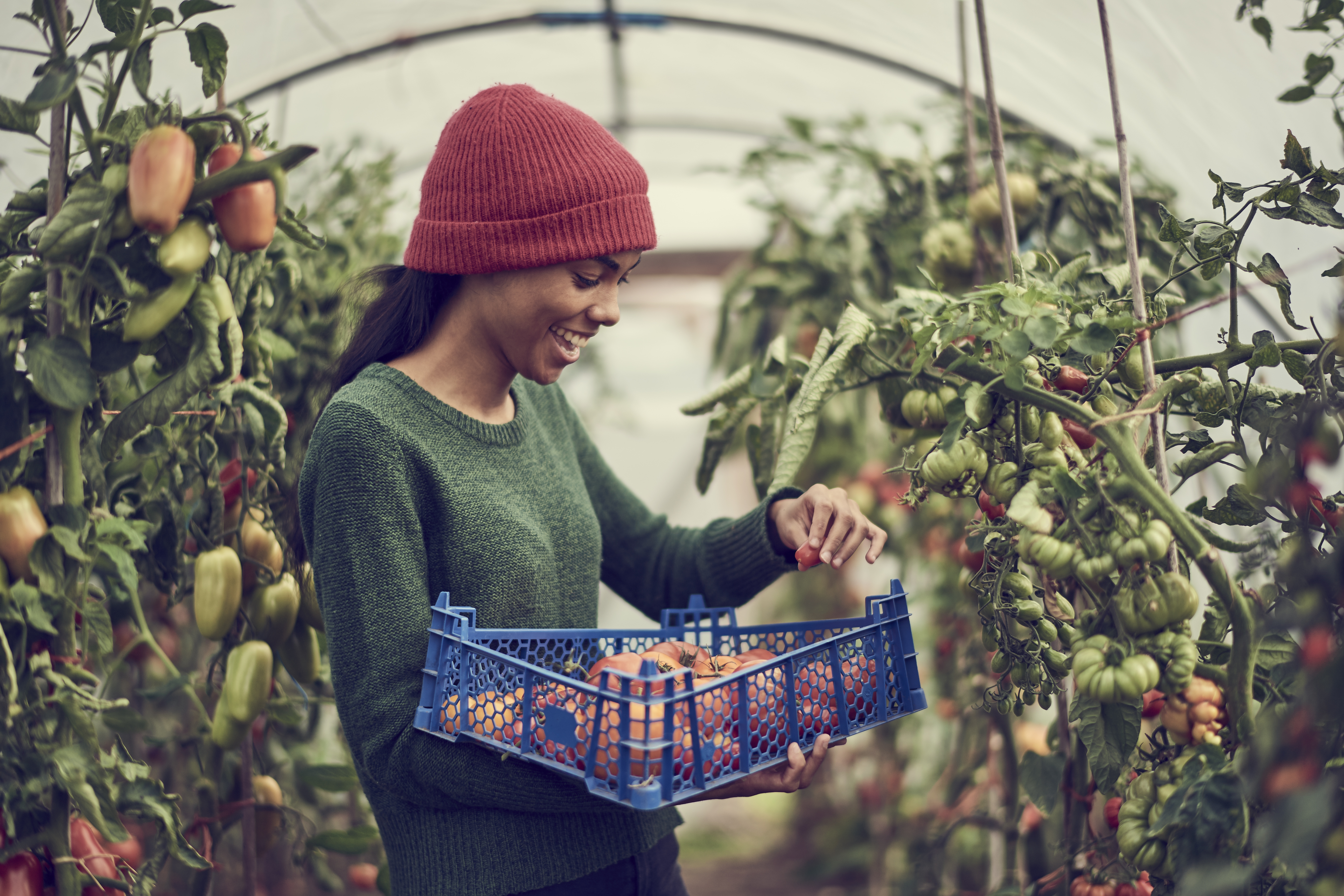
Healthier food means a healthier you. Though there’s always a lot of debate around what is healthy. Let’s keep it simple. If it comes in a freezer bag, cardboard box, and a jar or can, try and avoid it for a few months (unless it was jarred or canned by a person you know!). Highly processed foods (and sugars) are the bane of any healthy person’s existence. Buy fresh vegetables and fruits from a farmer’s market. Source proteins from local, regenerative farms (more on that later). Invest in whole grains and cereals and learn to cook with them. Vegetables are far less expensive than you’ve allowed yourself to believe. Broccoli, kale, cabbage, lettuces — none of them are particularly pricey.
We live in an age when almost any from-scratch recipe is a simple Google or YouTube search away. This doesn’t necessarily mean you have to cut the foods you love most out of your life. In fact, as Michael Pollan said in the Netflix docu-series Cooked, “eat pies or fried chicken or fries. But make them yourself.”
Learning to make food at home, means you control exactly what ingredients are used and, therefore, exactly what’s going into your body. When you make french fries at home, there are three ingredients: Potatoes, oil, salt. The average bag of frozen fries from the grocery store has up to ten ingredients. Making them yourself, from ingredients you can trust, is a great way to both stay a smidge healthier and up your kitchen game. Plus this isn’t so much “splurging” as adjusting your approach. It’s not going to burn that big of a hole in your wallet.
If you’re looking to up that kitchen game and stay healthy, check out some of these cookbooks. If you want to go deeper, we’d suggest finding a local cooking course or two. Generally speaking, cooking courses will run anywhere from $50 to $200 depending on what you want to learn. The bonus here is that you also get a meal at the end of each course.
SUPPORT YOUR LOCAL ECONOMY
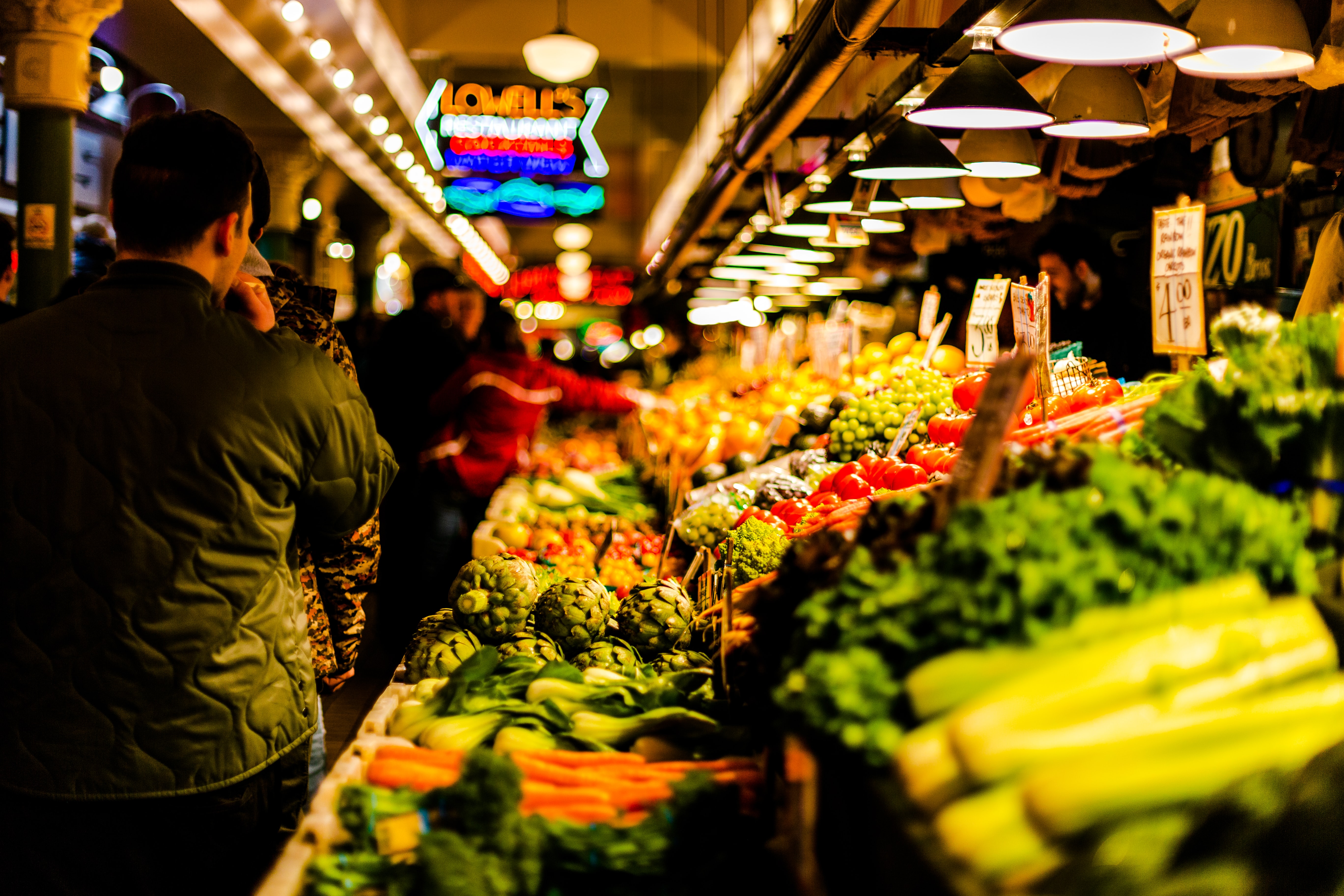
Even in the biggest of metropolitan areas, it’s fairly easy to find a farmer’s market of some sort. This isn’t to say you should only be buying local ingredients to eat. But you can probably add more and more into your daily food rotations.
Small-time farmers are often your neighbors and supporting their work is crucial to keeping small operators in business. According to National Geographic, 70 percent of the world’s food is still produced on small farms. Buying food from farms in your area puts money into pockets of the people in your community. Buying food from the factory farming system usually does not (unless you live in California’s central valley or some other industrial food hub).
Is there added cost involved? Probably, but the added benefit here is that while you’re supporting your community, you’re also sourcing better foods for you and those that gather around your table. In general, small-time local farmers aren’t using the harsher chemicals needed to grow food on mega-farms. More care is taken in assuring regenerative practices that will allow the farm to produce quality food year after year. Of course, this isn’t always perfect, but it’s certainly a step in the right direction to filtering money back into your community and, hopefully, allowing for growth and lower prices down the road.
The USDA curates a nationwide list of farmer’s markets around the country. Finding your local market has never been easier.
TRY A NEW DIET
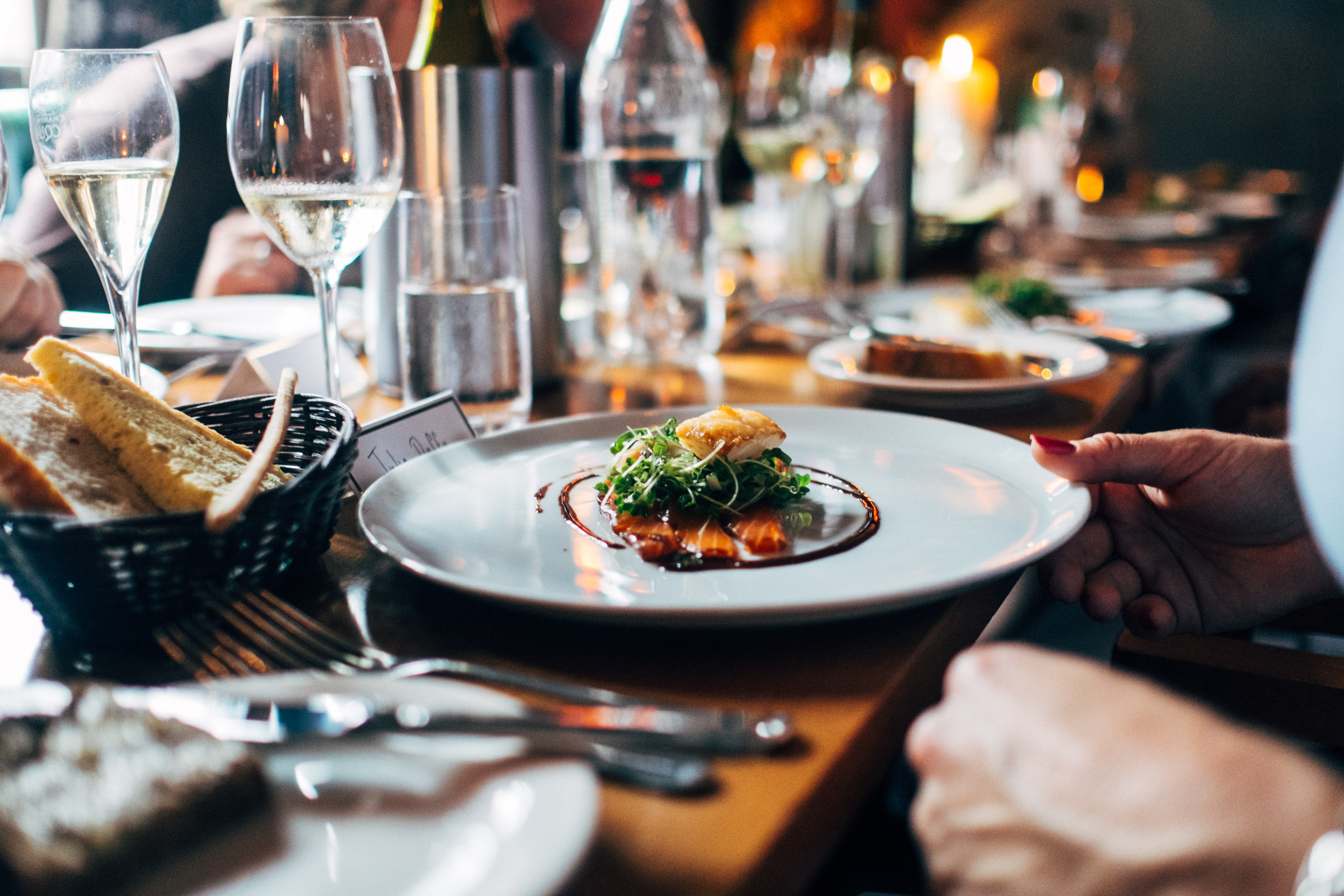
If you have some extra cash, maybe it’s time to try a new diet. Vegan diets can be cost-prohibitive, but if it really works for you, maybe you’ll keep with it, cost be damned.
You can also invest in sourcing wild foods. Buy a book on foraging. Maybe even go on a guided hunting or fishing trip. After all, sourcing wild food via hunting is a way of life that’s growing faster than any other food movement (including veganism) thanks to it being free of industrial processes. Whatever path you choose, an investment in a new way of looking at food, sourcing it, and eating is always going to enrich your life.
If you’re looking to get into sourcing wild food, contacting your local Backcountry Hunters & Anglers chapter is a great first step. The organization focuses on conservation through education and engagement with nature.
VOTE WITH YOUR WALLET AND YOUR PLATE FOR SUSTAINABLE FOOD
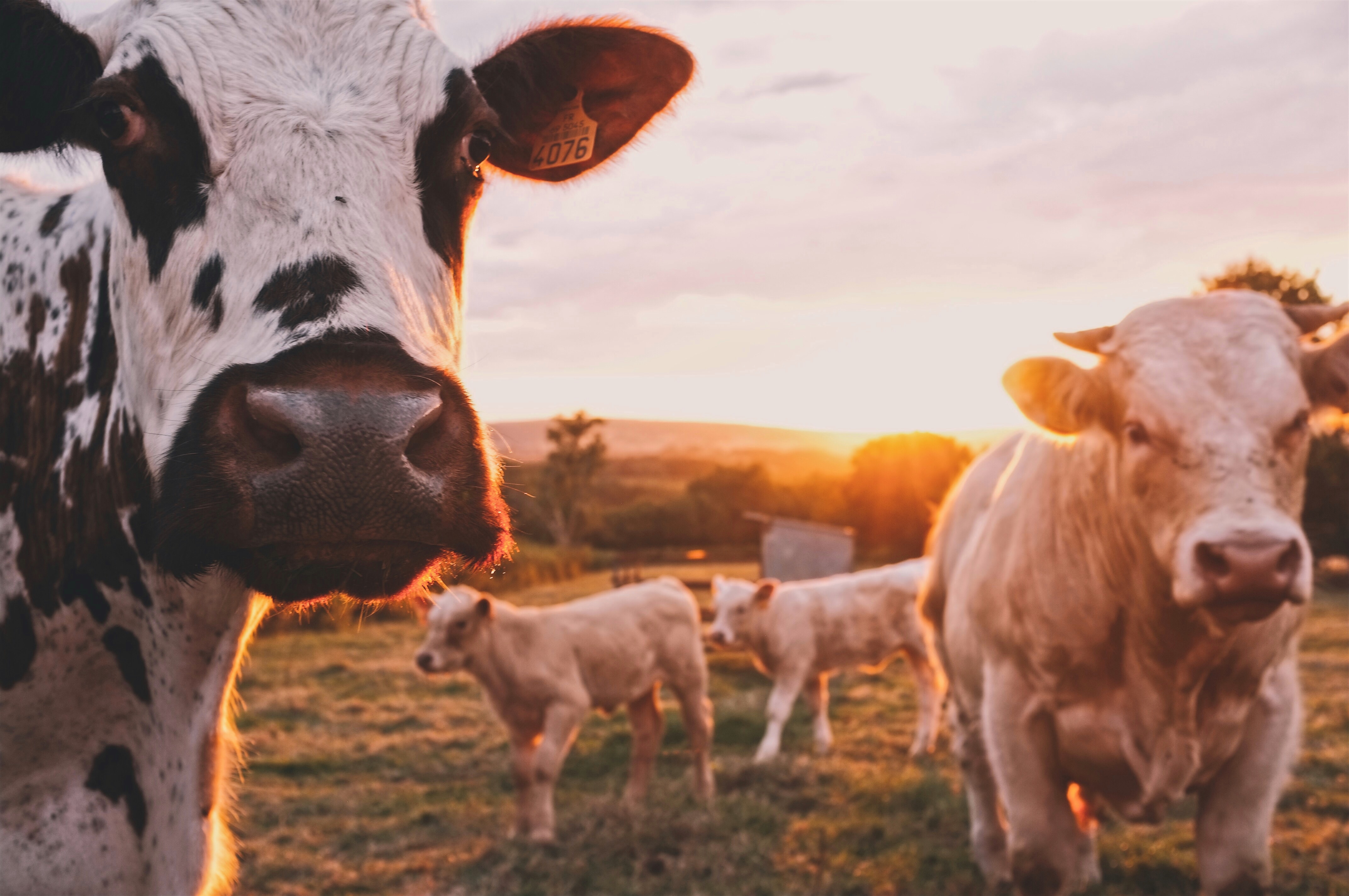
This is your chance to make a difference as a consumer. You can make ethical choices on the ground that shuns factory food, super-processed foods, and problematic agriculture.
There aren’t always easy answers out there. And you have to educate yourself as best as possible about what foods do what damage. For instance, it may too late for carbon-neutral to save us. It may be time to fully embrace regenerative farming. You’d be getting animal protein from a place that pulls carbon from the atmosphere. The choice you make with your food dollars means something to the wider world as much as it means something to your health.
Factory farmed meat is inferior to grass-fed regenerative farmed beef on a molecular level. In the simplest terms, you get more nutritional bang for your buck with the grass-fed stuff. Wild proteins are even more choked full of nutrients, meaning you need even less. In the end, if you have a little extra cash, it may be worth spending $20 on a wild bison steak instead of $5 on feed-lot beef.
GO TO CULINARY SCHOOL
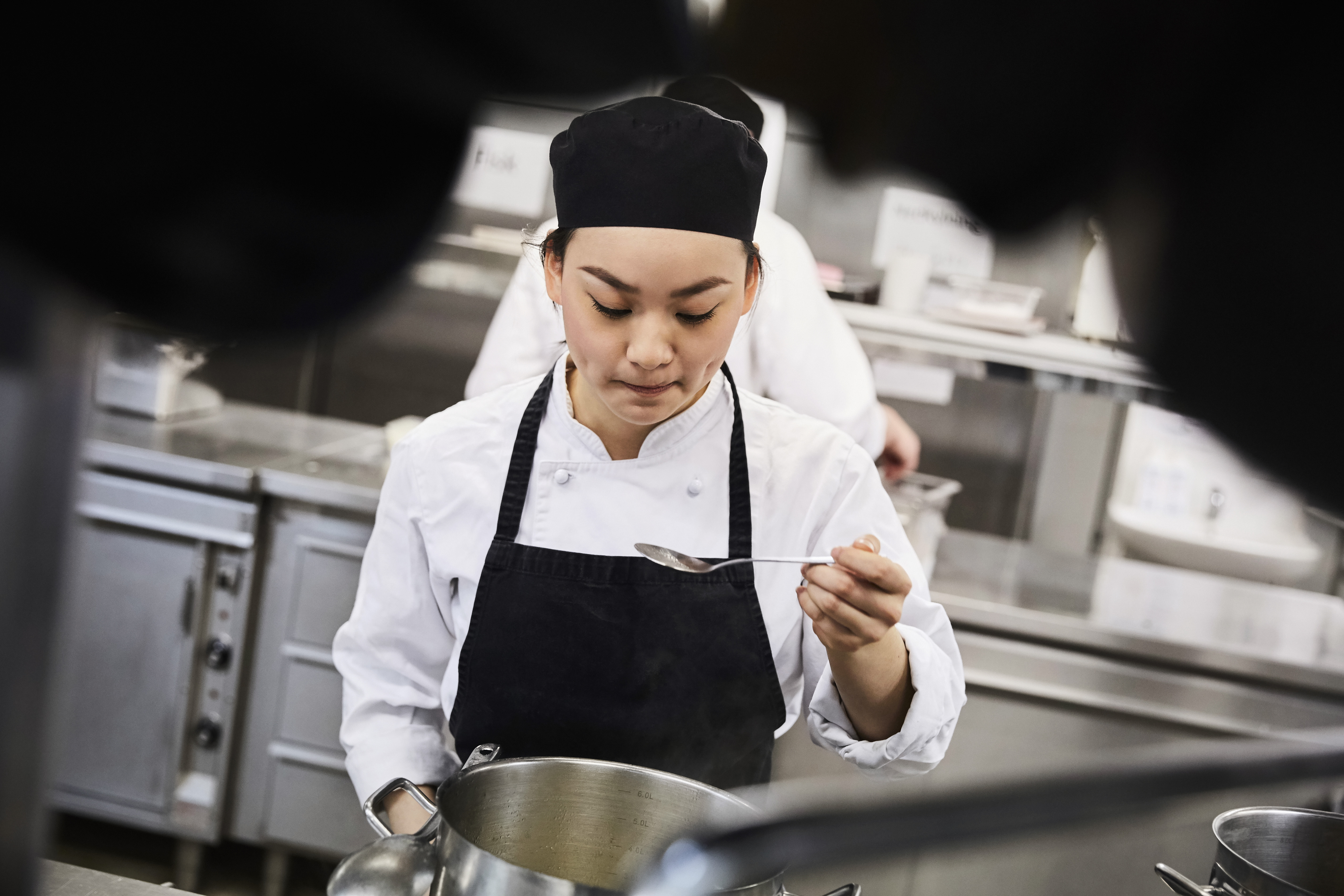
Lastly, if you want to go even deeper and have a full-on food experience that’ll inform your eating and cooking for the rest of your life, hit up the Culinary Institute of America — the place where folks train to be real-deal chefs.
This is much more than a couple of hours spent on a food course near your home. They run a five-day Culinary Boot Camp on their Hyde Park, New York campus. You’ll learn everything from stock prep to “roasting, grilling, sautéing, pan-frying, stir-frying, braising, poaching, and steaming.” The $2,250 price tag is a small price to pay to learn the skills needed to up your game in the kitchen and give you the tools to make better food choices all around.
Plus, the price is right around the cost of the average tax return of $2,727. That means there’ll be a little leftover to hit your local farmer’s market and experiment further when you get home.







